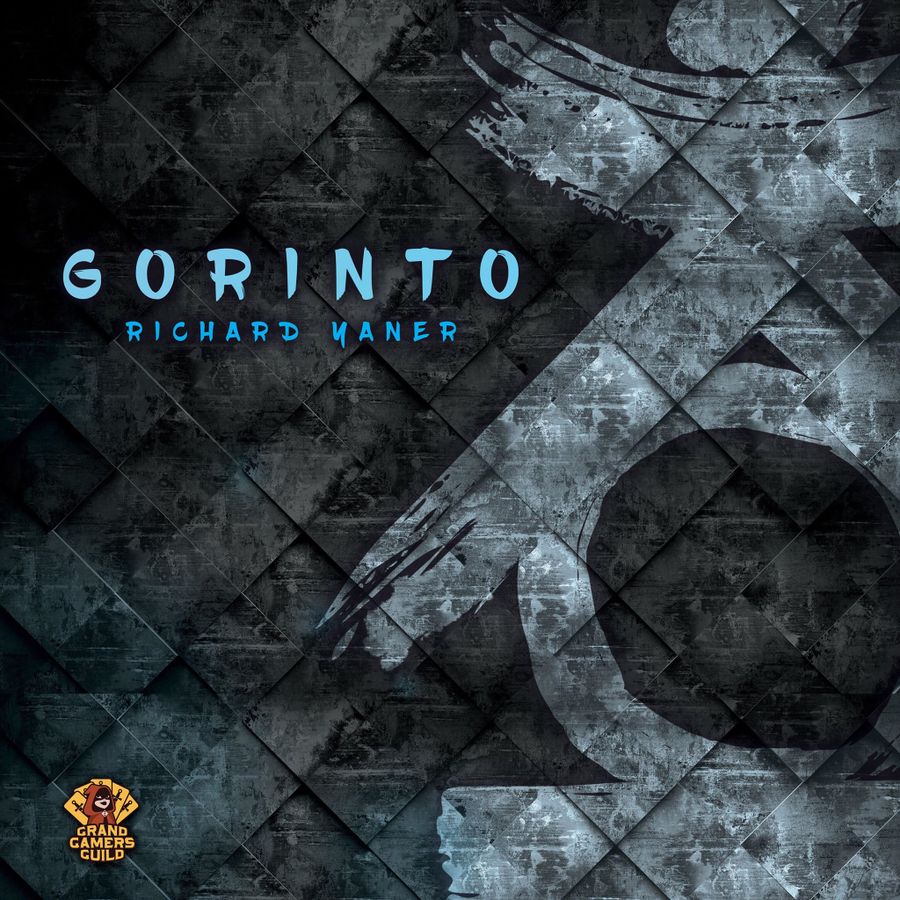Kickstart This! #180: Gorinto

Designer: Richard Yaner
Artist: Josh Cappel (1960: The Making of a President, Belfort, Endeavor, Endeavor: Age of Sail, Fire & Axe: A Viking Saga, The Manhattan Project: Energy Empire, Pandemic, Scoville, Wasteland Express Delivery Service)
Publisher: Grand Gamers Guild (The Artemis Project, Endeavor: Age of Sail, Pocket Ops)
Genre/Mechanisms: abstract strategy, pattern recognition, set collection, tile placement
Funding Status: At the time of this posting, Gorinto is already fully-funded. Pledges currently total almost 7x the initial funding goal, with 2 days left to go on the campaign.
Player Count: 1-4
Solo Mode: yes, co-design with David Turczi
Complexity: medium-light
Risk: medium-high
What It’s About: “A captivating abstract game where you must harness the power of the five elements (Earth, Water, Fire, Wind, and Void) to build a shrine. Seek balance to earn the most wisdom, based on a shared pair of goals that changes from game to game. Move a tile from the Path into the Mountain, then collect surrounding tiles based on the collection pattern and the depth of your understanding of that element. Every decision alters the landscape, grows your understanding, and charts your path forward.”
How It Works: “Gameplay is divided into 4 Seasons. In each Season, players will have an equal number of turns (the number diers depending on player count). At the end of each of the four Seasons, players will gain Wisdom for both Goal cards in the manner described on those cards. At the end of the game, players will gain 2 Wisdom for each tile of the two Key Elements they have collected.”
At the beginning of the game, tiles are placed in a 5×5 grid, called The Mountain, with 10 tiles placed around 2 edges of the Mountain, creating The Path. On their turn, a player will choose one of the remaining tiles from The Path, and place it somewhere along the Mountain in the same corresponding row or column. There are 5 types of tiles in the game– Void (purple), Wind (white), Fire (red), Water (blue), and Earth brown. The player then removes tiles based on the type/color of tile being moved from The Path onto The Mountain. They’ll also collect a number of tiles based on their Understanding. Each player starts the game with 1 Understanding in each element type. Every tile they subsequently collect on their player mats increases their Understanding in the element type. So, for instance, if a player was moving an Earth tile, and they already had 2 Earth tiles on their player mat, they would be able to collect a total of 3 tiles.
The way players collect tiles is different for each element type. With a Void tile, they’ll choose from the top tiles diagonally adjacent to the Void tile’s new resting place. This means they can collect up to a total of 4 tiles. With a Wind tile, they’ll choose from the top tiles orthogonally adjacent to the Wind tile’s new resting place. A Fire tile allows the player to choose from all of the top tiles in the same column. A Water tile allows the player to choose from all of the top tiles in the same row. And an Earth tile allows the player to choose from any tiles below the Earth tile’s new resting place in the same stack, all the way down to the bottom. Any collected tiles are moved to the player’s mat.
Play proceeds in turn order until there are fewer Path tiles than players– after each player has taken the same number of turns. In a 4-player game, this step would occur after each player has taken 2 turns and 2 tiles remain. In a 3-player game, this step would occur after each player has taken 3 turns and 1 tile remains. And in a 2-player game, this stop would occur after each player has taken 5 turns and 0 tiles remain. Once the Season ends, the players score the two Goal cards that were chosen randomly at the start of the game (these Goal cards will continue to be scored at the end of every season). Then any remaining Path tiles are discarded, and a new group of 10 tiles are drawn and distributed along the Path, and the Season Marker advances. If players have just scored for the 4th and Final Season, instead of drawing more tiles for the Path, they will instead score the 2 Key Element cards that were randomly chosen at the start of the game.
The player with the most total Wisdom points wins the game, with ties broken by the player with the least number of tiles on their player mat.
Comparisons: It’s an abstract strategy game featuring colorful tiles, so the most natural comparison must be Azul. Although where Azul is primarily focused on tile placement, Gorinto is focused on tile removal. But still– Azul.
What Should I Pledge?:
$35 Initiate: Gorinto Retail Game: the Gorinto retail edition includes the standard box, game board, score board, punchboard start player coin, punchboard season marker, 4 punchboard player mats, 100 plastic element tiles, 12 linen finish goal cards, 5 linen finish key element cards, and 4 wooden understanding markers.
$45 Master: Gorinto Kickstarter Game: everything in the retail edition, plus a foil box, 3D Gorinto miniature season marker, metal start player coin, screen-printed draw bag, and 5-tile Dragon mini-expansion.
Add-Ons:
None.
KS Exclusives
The items in the Master pledge/Kickstarter version are KS-Exclusive.
All-In Total: In the continental U.S., you’re looking at $45 for the Master pledge plus $12 in shipping for a total of $57.
Gorinto completes its Kickstarter on Wednesday, March 4th and tentatively ships in February 2021.